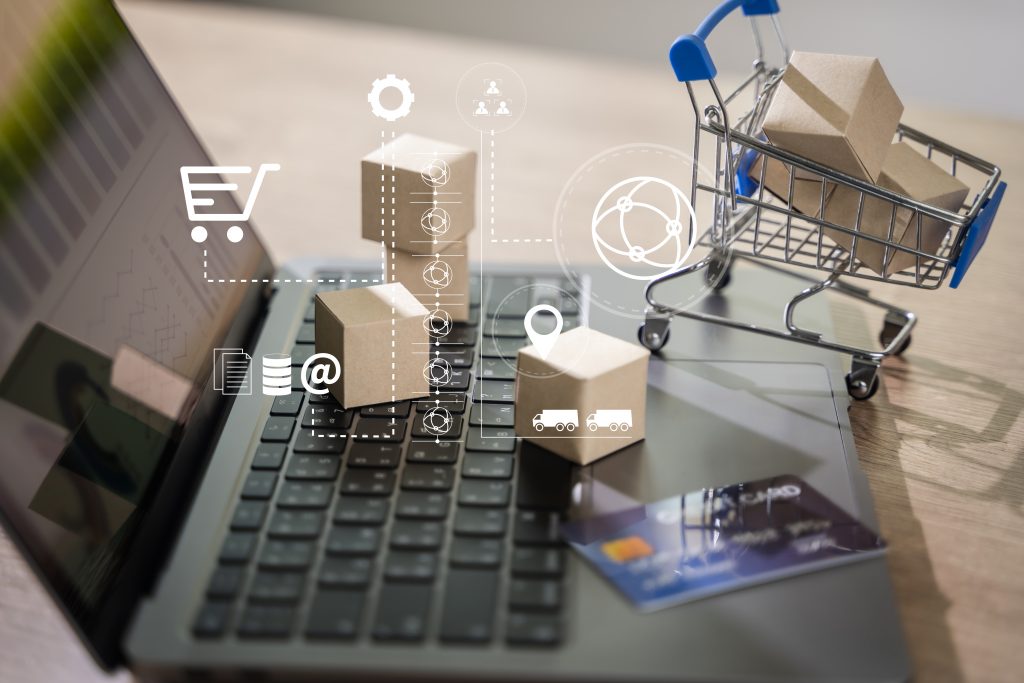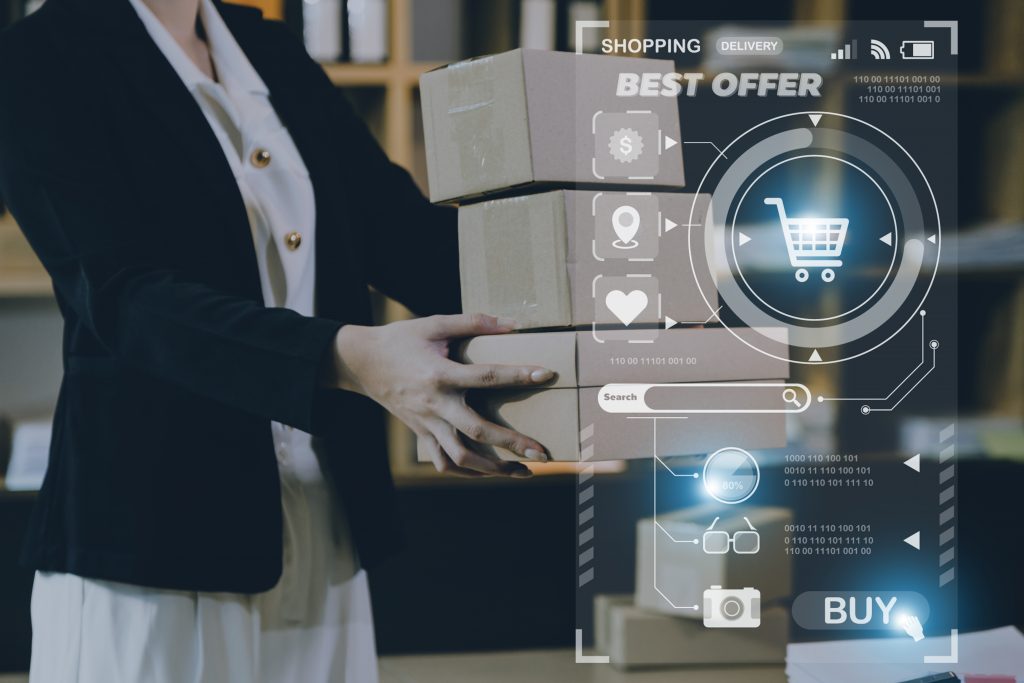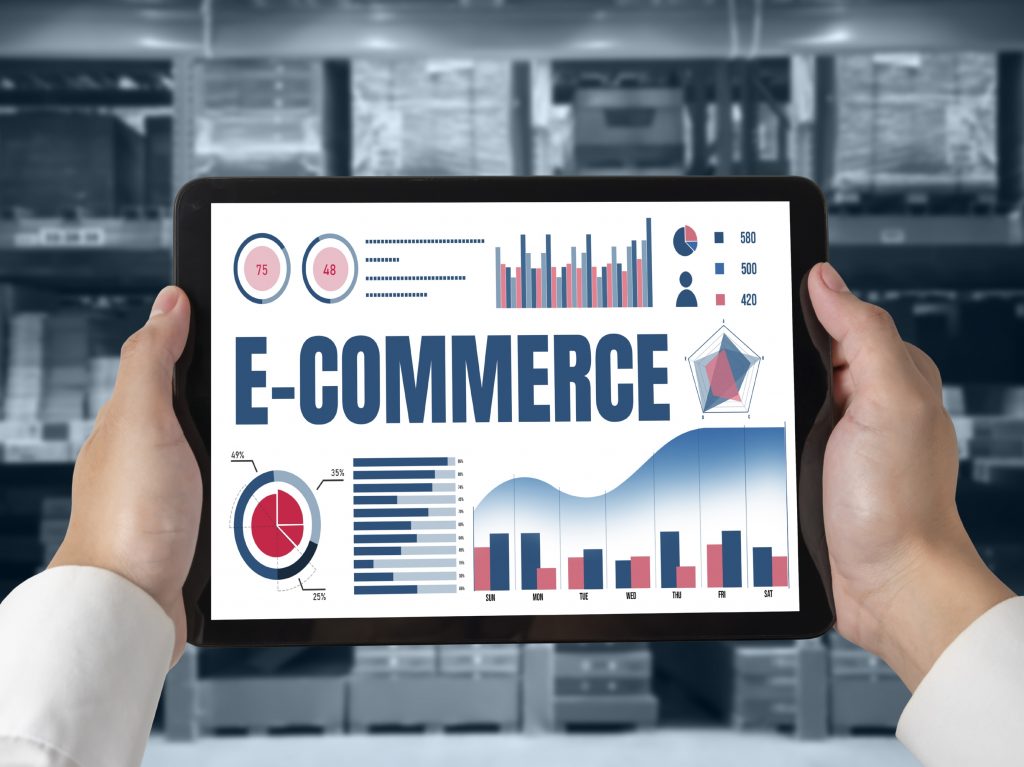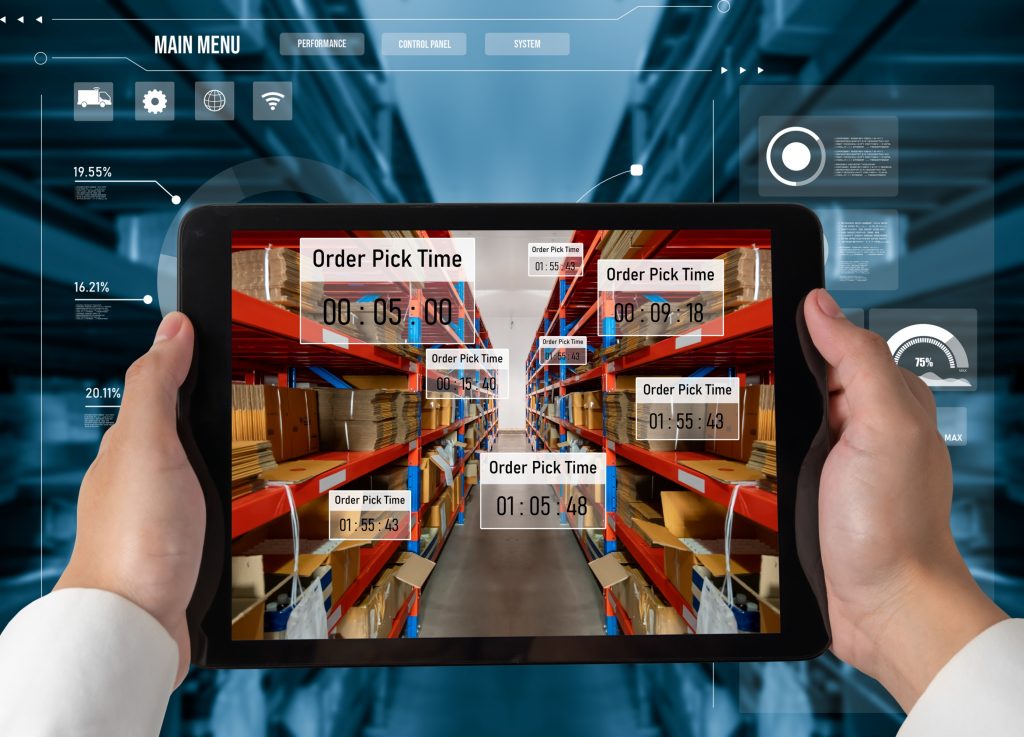
1. Understanding Ecommerce
Scanning countless products with a tap or a click, and getting them delivered right to your doorstep in no time – welcome to the power of eCommerce! With its enticing blend of speed, convenience, and product diversity, eCommerce is shaking up the retail world. But what lies at the heart of this phenomenon? Are you curious about its workings and future predictions for 2024? Let’s immerse ourselves in the fascinating world of eCommerce.
1.1. What Is Ecommerce?
An Introduction to Ecommerce
Ecommerce, or electronic commerce, is a broad term encompassing all commercial transactions conducted online. Sure, it’s about buying and selling goods or services over the internet, but it’s beyond just that. It takes in the complete online process – right from development and marketing to delivery and payment for products or services. And guess what? The spectrum of ecommerce is incredibly vast, covering everything from fashion and books to digital goods like music tracks and software.
E-commerce Platforms
What keeps ecommerce ticking? The catalyst fueling this process is the ecommerce platform – a software that underpins an online store. For instance, with 6.2 million live sites, WooCommerce takes a sizeable bite of the ecommerce platform market.
The E-commerce Ecosystem
The thriving world of ecommerce is not just platform-dependant; it flourishes across multiple channels like social media, search engine optimization (SEO), email marketing, and content marketing. Not to forget, social media – the breeding ground for a new ecommerce variant, social commerce.

Examples of E-commerce
Picture some classic e-commerce examples. On one side, you have Business-to-Consumer transactions, like buying a t-shirt from an e-store. On the other, Consumer-to-Consumer transactions, like selling your old phone on an e-commerce marketplace. In the business zone, cases range from B2B Ecommerce to B2B2C E-commerce.
A Peek into Global Ecommerce
Did you know? There’s a plethora of ecommerce brands globally, totaling about 12 million. Among them, Amazon and Walmart from the US stand out. In the Business-to-Consumer (B2C) realm, specific verticals rule. In the UK, fashion is a prime example, accounting for 28.7% of ecommerce revenue.
Benefits of e-commerce
Benefit 1 | Savor the Ease of Ecommerce
Shop at leisure from the coziness of your home, comparing products and costs seamlessly.
Benefit 2 | Ecommerce: Your Global Marketplace
Run your business anywhere, reaching out to customers worldwide.
Benefit 3 | Dive into the Ecommerce Spectrum
Ecommerce platforms present unlimited inventory and personalized experiences, catering to 76% of consumers who prefer them.
Benefit 4 | Let Data Lift Your Ecommerce Game
Data insights help you fine-tune your strategies, yielding improved sales and profitability.
Benefit 5 | The Ecommerce Advantage in Brief
Ecommerce equals convenience, global reach, personalization, and data-empowered business decisions.
The Future Is E-commerce
Ecommerce’s expansive range of platforms and activities underscores its limitless potential. As technology evolves and more businesses go digital, the future is all about e-commerce.
1.2. How Does Ecommerce Work?
Understanding the Customer Journey
In e-commerce, the customer journey is the digital equivalent of a shopper’s experience in a physical store, from first hearing about a product to completing a purchase. This journey can be optimized for greater conversion rates.

Importance of Streamlined Checkout
An engaging customer journey often involves a streamlined checkout process. According to the Baymard Institute, an optimized checkout design can boost conversion rates by 35%. Additionally, Venture Harbour reports that multi-step forms may yield up to 300% higher conversions than one-page forms.
Delving into the Order Fulfillment Process
Once a customer places an order, it enters the fulfillment phase, involving preparation and shipping. This process is crucial and directly impacts customer satisfaction levels. It’s of utmost importance that this process is efficient and error-free to uphold your store’s reputation.
Securing Payments in Ecommerce
In the e-commerce sphere, offering a variety of secure payment options is integral. Customers need to feel confident making transactions on your website.
Ensuring Data Privacy
Protecting customers’ data is a major part of secure payments. It involves robust security measures, where not only multiple payment methods are offered, but meticulous steps are taken to safeguard customer information.

The Role of Supporting Applications and Partnerships
Ecommerce success extends beyond selling a service or product; creating a holistic customer experience is crucial. This involves leveraging supporting applications and forming strategic business partnerships.
Enhancing Customer Experience
Applications like live chat, AI-powered recommendation tools, and customer review systems boost the shopping experience. Moreover, collaborations with companies, such as logistics and fintech firms, can improve shipping processes and simplify transactions.
1.3. Types of Ecommerce Platforms and Online Sales Channels
E-commerce Platforms
In the vast ecommerce landscape, various ecommerce platforms exist to assist your online business journey. They provide comprehensive management of websites, sales, and operations. WooCommerce and Shopify are noteworthy examples.
Shopify: An E-commerce Powerhouse
Capturing 11.53% market share, Shopify enables businesses to develop online stores with a suite of tools like shopping carts, payment gateways, marketing aids, and SEO solutions.
Custom-Built E-commerce Websites
Choosing a Software as a Service (SaaS) platform can give you customization control over functionality and branding, enhancing your autonomy and creative freedom in establishing an online store.
Third-Party Platforms
Online marketplaces like Amazon and eBay are prevalent third-party platforms that offer a bustling digital marketplace for your products alongside other vendors.

Riding the Wave of Marketplaces
Platforms like Amazon attract massive traffic, potentially boosting your sales. However, a surge in visibility can also mean fierce competition.
The Other Side of the Coin
Third-party platform usage has challenges, including fees that can reduce profits and a lack of control over the customer shopping experience and data.
Combine and Conquer: The Omnichannel Approach
An omnichannel strategy leveraging both ecommerce and third-party platforms provides a seamless shopping experience across various channels to reach customers wherever they shop.
2. Ecommerce Trends and Challenges
2.1. Ecommerce Trends in 2024
Social Commerce: The blend of social media and e-commerce is gaining popularity, as businesses leverage online social platforms to engage, advertise, and sell directly to consumers. In fact, Practical E-commerce reports that social commerce shoppers are essential contributors to overall online retail sales, especially in industries like fashion and consumer electronics.
E-commerce Personalization: It’s no surprise that a tailored shopping experience is more likely to lead to a purchase. Data from McKinsey & Company suggest that up to 76% of consumers prefer buying from e-commerce sites that use personalization. And according to Twilio Segment, 56% of consumers indicated that they are likely to become repeat customers if their shopping experience is personalized. We also predict that there will be a growing demand for personalized experiences in the coming years.

Voice Commerce: With the integration of AI in e-commerce, we anticipate a shift towards shopping with the help of intelligent assistants. The convenience of voice-activated shopping could transform how consumers interact with e-commerce platforms. Consumer behavior is expected to change dramatically, potentially leading to a surge in e-commerce spending via conversational marketing channels, forecasted to reach a whopping 290 billion dollars by 2025 according to Statista.
Sustainable E-commerce: The call for sustainability has reached the e-commerce industry. Buyers are making more conscious decisions and actively seeking out businesses that echo their values, offering eco-friendly products and adopting ethical practices. As we move forward, this trend is predicted to grow stronger, making sustainability a key factor in the success of future e-commerce businesses.
AR and VR Integration: Imagine trying on a product virtually before buying it? Innovations in AR and VR technology stand to revolutionize the online shopping experience by offering this possibility. In line with a BigCommerce survey, where 35% of respondents said they would likely shop more online if they could virtually try a product before buying it, we predict a promising future for AR and VR in ecommerce.
Cryptocurrency Payments: More and more ecommerce sites are beginning to accept digital currencies for transactions. With the rapid growth and acceptance of cryptocurrency as a legitimate payment option, it is only a matter of time before it becomes commonplace in ecommerce.
2.2. Challenges and Solutions in E-commerce
Supply Chain Disruptions
In the realm of e-commerce, timely deliveries are crucial for customer satisfaction. With 78% of frequent shoppers pegging fast shipping as the top influencer in their purchase decision, the efficacy of your supply chain is not something you can afford to overlook. Supply chain disruptions, caused by factors like global events, supplier issues, and logistical hurdles can spell disaster if not appropriately managed. To navigate this challenge, it’s essential to develop contingency plans, diversify suppliers, and leverage technology such as predictive analytics to foresee potential disruptions.

Data Security
When dealing with online transactions, you’re often trusted with sensitive customer data. Safeguarding this information is not only ethical and necessary for establishing trust, but it’s also demanded by privacy laws. As a business owner, adopting secure payment gateways, ensuring website security, and clearly communicating your data usage policies can help in mitigating data security risks.
Tackling Stiff Competition
Given the vast nature of the digital marketplace, competition is inevitable and can be fierce. In such a scenario, you may wonder, how can my e-commerce business stand out? Differentiation is your key. This may take the form of offering unique products, excelling in customer service, curating a distinctive brand identity, or innovating in ways the market hasn’t seen yet.
Mobile Optimization
As more consumers switch to mobile devices for their shopping needs, it has never been more crucial to optimize your ecommerce site for mobile. Your website not only needs to be responsive but should also offer an intuitive, smooth user experience. A difficult-to-navigate mobile site can quickly lead potential customers to look elsewhere. So, focus on creating a swift, seamless mobile shopping experience.
Customer Retention Strategies
Acquiring a new customer can cost five times more than retaining an existing customer. Hence, it’s crucial to invest time and resources in building customer loyalty. This could be accomplished by providing exceptional customer service, implementing a reliable return policy, running loyalty programs, and personalizing the shopping experience. Remember, a loyal customer is your best advocate.

3. Building and Scaling Your E-commerce Business
3.1. Scaling Your E-commerce Business
Inventory Management in E-commerce
Inventory management is a critical aspect of e-commerce. It involves maintaining a healthy balance of stock to meet customer demand without the setback of surplus goods or stock shortages. Effective inventory management reduces operational costs, helps avoid out-of-stock situations, and increases customer satisfaction. New techniques and software solutions have emerged to simplify this process, allowing even small businesses to efficiently navigate this aspect of e-commerce.
Ecommerce Marketing Strategies
In the densely populated online marketplace, having a solid marketing strategy is key to gaining visibility, attracting customers, and increasing sales. E-commerce businesses utilize a mix of digital marketing techniques including social media advertising, content marketing, search engine optimization (SEO), and influencer collaborations. Notably, recent statistics show that influencer marketing has significantly gained traction, with 13% of consumers open to spending more on products promoted by influencers or celebrities.
International Expansion
International expansion provides an excellent opportunity for e-commerce businesses to reach a wider audience and increase sales. However, it comes with the challenges of understanding diverse market dynamics, adapting to various legal and regulatory environments, as well as localizing products and services to suit different cultures and languages. Strategic planning and use of localisation tools can greatly ease this transition and enable businesses to tap into new markets successfully.
Ecommerce Customer Support
Providing top-notch customer support is an absolute necessity in e-commerce. It is essential in building trust, fostering customer loyalty, and improving brand reputation. It’s all about being responsive, empathetic, and helpful in addressing customer issues or concerns. Incorporating live chat options, having a dedicated support team, and leveraging AI chatbots for instant assistance are some ways businesses enhance their customer support mechanisms.

Analytics and Metrics
Analytics and metrics play a vital role in tracking performance and making informed decisions in e-commerce. Leveraging these statistics provides valuable insights into customer behavior, shopping trends, and business performance. This in turn aids in creating adaptable and innovative business strategies, tailored to meet ever-changing shopper expectations. Whether you are trying to increase brand awareness, as highlighted by 7% of e-commerce marketers in a HubSpot poll, or boost customer retention, data analysis should be at the core of your strategy.
3.2. Website Design and User Experience
Site Speed
A swift e-commerce website is key— a delay of even one second could lead to a 7% reduction in conversions, affecting your profits. Streamlining your site speed should be a priority.
Product Descriptions
Accuracy and engagement are crucial with product descriptions. Remember, 73% of frequent buyers rely on accurate product descriptions for purchase decisions. Always detail features, specifications, and benefits.
Transparent Pricing and Shipping
Eradicate hidden costs that often contribute to cart abandonment. Be transparent about extra fees, taxes, shipping costs, and estimated delivery time—transparency leads to better customer experience and increased conversions.
Optimized Checkout Process
According to the Baymard Institute, an optimized checkout process could increase conversion rates by 35%. Multi-step checkout forms, which have shown up to 300% higher conversions, are a great way to achieve this.

Customer Reviews and Ratings
Encourage user-generated content like reviews and ratings. These instill trust and authenticity, aiding shoppers in the decision-making process and reducing product returns.
Mobile Optimization
With the rise of mobile commerce, ensure your site is mobile-friendly. In fact, 9.73% of consumers will turn to an easier-to-use mobile site when faced with a challenging mobile experience.
Add-ons and Plugins
Consider supporting applications such as Live Chat Plugins, Personalized Recommendation Engines, or AI Chatbots. These tools can guide customers through their buyer’s journey and provide customer service during off-hours.
Regular Testing
Regularly test and revisit your design and UX strategies. Keeping up with e-commerce trends, consumer behavior, technological advancements, and competition helps in creating a more engaging and user-friendly ecommerce platform.
3.3. Digital Marketing Strategies for E-commerce
Let’s delve deeper into some of these exciting strategies:
Content Marketing
When it comes to attracting potential customers, nothing resonates more than high-quality, informative content. This can come in several forms, such as blogs, instructional videos, or eye-catching infographics. The key is in providing value, not just selling a product. This way, you’re not only marketing your brand but also building credibility, and loyal customers will follow.
Social Media Advertising
With an overwhelming 80% of purchases reportedly made within social media apps, a well-placed and targeted ad can reap significant rewards. Be it Facebook, Instagram, or Pinterest, these social platforms offer you an opportunity to expand your reach and meet your customers where they already spend their time. Don’t forget to take advantage of selling directly through these apps; about 25% of brands are doing it already.

Email Campaigns
Surprisingly, email continues to provide the highest ROI among all marketing campaigns. A carefully designed email strategy does not only bring brand awareness but also nurtures customer relationships. The secret lies in personalization; a personal touch can boost your revenue by over 25% and watch your customers spend more than they planned.
Influencer Marketing
Influencer marketing is showing no signs of slowing down, with the industry poised to be worth over $16.4 billion in 2022. Teaming up with influencers or celebrities can give your products a boost as 13% of consumers are more willing to spend on endorsed products. However, it’s imperative to find an influencer who aligns with your brand; authenticity always wins.
SEO (Search Engine Optimization)
Visibility is key in e-commerce. The higher you appear in the search engine results, the more customers you’ll reach. SEO is all about optimizing your website for search engines like Google – from using relevant keywords to ensuring a mobile-friendly design – it’s an essential strategy for any e-commerce business wanting to stay in the race.

Remember, successfully marketing your ecommerce business requires more than just one strategy. It’s a mixture of practices tailored to your brand and customers’ needs. So, dive in, try them out, and find your perfect blend.
4. Legal and Fundamental Considerations in Ecommerce
4.1. Ecommerce Legal Considerations
One significant part of e-commerce is the digital marketplace, providing a platform where buyers and sellers can connect. Popular examples include Amazon, eBay, and Alibaba. Such platforms dominate the landscape, providing an array of options for shoppers to compare products, read reviews, and buy whatever tickles their fancy, all without leaving the comfort of their homes.
The Future of Ecommerce
Looking to the future, the e-commerce landscape is poised for more expansion. The UK, for example, reflects this positive outlook. As of January 2021, consumer e-commerce accounts for 36.3% of the total retail market in the UK, with projected revenue to reach an astounding $285.60 billion by 2025. Jurisdictions worldwide share in this promising narrative.
In conclusion, ecommerce is more than just online trading; it is a dynamic, fluid space that holds numerous opportunities for both businesses and consumers. Its presence is an indicator of the larger digital transformation trend sweeping across every corner of the globe.
4.2. Understanding the Fundamentals of Ecommerce
Grasping the basics of e-commerce is like fitting together the pieces of a puzzle. To cultivate a thriving online store, you must firstly have a solid understanding of the essentials. Let’s uncover a closer look at these building blocks.
E-commerce Business Models
Perhaps the first element you’ll encounter is defining your business model. There’s Business-to-Consumer (B2C), where products are sold directly to consumers, such as in online boutiques or electronics stores. There’s also Business-to-Business (B2B), which typically involves wholesale operations. Business-to-Administration (B2A) and Consumer-to-Administration (C2A) models mainly encompass online deal transactions involving a public administration. Lastly, there’s Consumer-to-Consumer (C2C), a model used by online marketplaces like eBay where individuals can trade, buy, and sell items. You’ll need to determine which of these models aligns best with your products and goals.
>> See More: Choosing Your Startup’s Ideal Ecommerce Type: A Comprehensive Guide

Product Selection
The next critical aspect of e-commerce is deciding what products or services you’d like to offer. The variety is immense: fashion, electronics, household items, software services, and more. The choice hinges on discovering a segment where your passion meets a market need. Proper market research and competitive analysis can help you unveil these opportunities.
Website Development
No e-commerce business can thrive without a well-designed website. It’s not just about aesthetics, though a visually appealing site may attract visitors. The true test is in its user-friendliness. How easily can visitors find what they’re looking for? How smooth is the checkout process? After all, an optimized checkout design can increase conversion rates by 35%.
Customer Experience
A core tenet of reliable e-commerce operations is an exceptional customer experience. High-end brands may get by on their luxury appeal, but most e-stores need to offer free shipping, hassle-free returns, and excellent customer service. Make sure these elements are woven into your online store’s fabric to create happy, return customers.
Marketing and SEO
With an estimated 24 million ecommerce stores worldwide, being found amidst this ocean can seem daunting. That’s where strategic marketing and Search Engine Optimization (SEO) come in. Through targeted campaigns and SEO practices, you can increase your online visibility and attract your ideal customers.
At its core, ecommerce is about leveraging the immense reach of the internet to sell products or services. With an understanding of these fundamentals, you’re well equipped to dive into the vibrant world of ecommerce!
Before you dive into the world of ecommerce, it’s crucial to understand its basics. This section will provide you with a detailed insight into what ecommerce is and how it functions. Comprehend the role and working of ecommerce platforms, explore various online sales channels, and delve into the types of ecommerce business models such as B2B, B2C, C2C, and D2C.
5. E-commerce Business Success
5.1. Building a Successful E-commerce Business
Building a lucrative e-commerce business doesn’t just happen overnight. It’s a journey that consists of various strategic steps, each playing a pivotal role in your online venture’s long-term prosperity. Whether you’re one of the 12 million e-commerce companies globally or looking to join this burgeoning industry, the following aspects are crucial to your success.
Solidifying Your Business Plan
Your first step is to develop a strong business plan. This blueprint should detail your company’s objectives, target audience, product or service offerings, and how you plan to tackle the competition. It also outlines potential challenges and strategies to overcome them.

An Engaging Ecommerce Platform
Choosing the right ecommerce platform is another vital decision. Platforms like WooCommerce, which boasts 6.2 million live online stores, provide a user-friendly interface for both you and your customers. The platform you choose should also be scalable, offering room for your business to grow.
Optimized Checkout Design
According to the Baymard Institute, ecommerce sites can boost their conversion rates by 35% with an optimized checkout design. Simplified forms, multiple payment options, and an easy-to-navigate layout contribute to an ideal checkout experience.
The Power of Free Shipping
One tried and tested technique that often leads to success in ecommerce is offering free shipping. With shipping costs being a common reason for cart abandonment, free shipping can be the difference between a potential customer making a purchase or bouncing off your site.
Eye-Catching Branding and Marketing
Unique and memorable branding sets your e-commerce store apart from the competition. Partner your branding efforts with effective digital marketing strategies such as SEO, social media campaigns, and influencer collaborations for increased visibility and customer engagement.
Remember, success doesn’t come overnight. But with a committed approach to implementing and refining these aspects, you’re well on your way toward building an e-commerce business that’s not only successful today but is also geared for future growth. Bear in mind that the e-commerce space is set to expand, with predicted growth of 56% and an estimated market size of $8.1 trillion by 2026. By arming yourself with effective strategies and insights, your e-commerce brand can stake its claim in this promising landscape.
Starting an e-commerce business can be quite intimidating. This section will guide you through the process of setting up a successful e-commerce business—right from choosing the ideal e-commerce type for your startup and building an effective website, to developing a winning e-commerce strategy and utilizing top e-commerce enablers.

5.2. The Growth Landscape: Ecommerce Trends and Market Growth
Staying current is key in the fast-evolving ecommerce industry. This segment unveils future ecommerce trends shaping 2024 and beyond.
It also throws light on the rapid growth of ecommerce in Asia, with a focus on key players, trends, and opportunities in countries like Malaysia, Indonesia, Singapore, Vietnam, the Philippines, China, India, and Japan.
>> See more below:
- Your Comprehensive Guide to Launching an e-Commerce Business in Singapore
- E-commerce in Indonesia: Key players, Trends, Growth & Opportunity
- E-commerce in Malaysia: Key players, Trends, Growth and Opportunity
- E-commerce in Indonesia: Key players, Trends, Growth & Opportunity
- E-commerce in Vietnam: Key players, Trends, Growth & Opportunity
- E-commerce in Philipines: Key players, Trends, Growth & Opportunity
- E-commerce in China: Key players, Trends, Growth & Opportunity
- Exploring Ecommerce in India 2024: Key players, Trends, Growth & Opportunity
6. Enhancing Ecommerce Performance and Logistics
6.1. Enhancing Your E-commerce Performance
As you delve deeper into the world of e-commerce, you’ll come to realize that optimization is the secret to success. No matter how impressive your products are, or how compelling your site design may be, you’ll want to keep enhancing your e-commerce performance to stay ahead of the competition and meet your customers’ ever-evolving expectations.
Making Use of Personalization
According to a study by McKinsey & Company, 76% of consumers are more likely to make a purchase from e-commerce sites that utilize personalization. An even more staggering statistics from Twilio Segment asserts that 56% of consumers indicate they are likely to become repeat customers if their shopping experiences are personalized. Nevertheless, implementing personalization goes beyond inserting the customer’s name into an email. Instead, it’s about tailoring product recommendations, offers, and communications to individual customer behavior and preferences.
Leveraging Ecommerce Statistics
Strategic use of e-commerce statistics can powerfully drive your success. Information about customer preferences, market trends, and competitor analysis can guide your decisions, enabling you to
Leveraging the power of data can adjudicate your path to heightened e-commerce performance. A compelling statistic suggests that e-commerce sites can experience an upswing in conversion rates by 35% merely by optimizing their checkout design (Baymard Institute). This is only the tip of the iceberg when it comes to understanding and improving the performance of your e-commerce site.

Analyzing Your Performance
Simply keeping your online store running isn’t enough. You need to understand what’s working and what’s not. Take advantage of e-commerce analytics tools to tap into valuable insights such as bounce rate, conversion rate, average order value, and customer lifetime value. These figures can provide a robust understanding of your performance and inform strategic decisions.
Tailoring the User Experience
The user experience is instrumental to your e-commerce performance. An impressive 76% of consumers are more likely to purchase from e-commerce sites that offer personalized experiences (McKinsey & Company). To resonate with your customers, ensure your site is easy to
Boost your sales and elevate your e-commerce performance. Learn how to enhance e-commerce for services and effectively transition from B2B to D2C e-commerce platforms. In addition, explore case studies, examples, platforms, and features related to B2B e-commerce.
6.2. Ecommerce Marketing and Logistics
Ecommerce Marketing and Logistics: A Snapshot
Thriving in the world of ecommerce goes beyond just selling a great product or having a visually appealing website. It’s all about reaching the right audience, at the right moment, and ensuring a seamless interacting between your products and the customers. In this scenario, the role of ecommerce marketing and logistics is paramount.

Ecommerce Marketing: Drawing in your Audience
Ecommerce marketing refers to activities aimed at driving traffic towards your ecommerce website and converting that traffic into paying customers. These activities include email campaigns, social media ads, SEO tactics, and content marketing. As an ecommerce business owner, mastering these strategies is an absolute necessity to introduce your offerings to your target audience and stimulate purchasing decisions.
Logistics: Ensuring Smooth Order Fulfillment
On the other hand, logistics focus on providing a smooth and efficient order fulfillment process. It encompasses inventory management, order handling, and customer service. Strong logistics management, therefore, results in process optimization and significant cost and time reduction, leading to greater customer satisfaction and loyalty.
>> See More: Ecommerce Logistics: Overview, Key Operations, and Technologies for 2024
The Power of Automation
Automating your marketing and logistic operations can bring myriad benefits to your ecommerce business. From streamlining your email campaigns and social media posts to optimizing your content production, automation is key to a leaner and more effective way of staying connected with your customers.
Unlock Success with Effective Strategies
Are you seeking to connect with your target customers more effectively and optimize your delivery process? This guide offers a comprehensive overview of successful ecommerce marketing strategies and insights into key logistic operations and technologies. Stay tuned to reach your ecommerce success.
7. Key Resources for Ecommerce Success
In your pursuit of ecommerce success, tapping into relevant resources is a must. The route to triumph in the digital marketplace is more than just having a slick website or an extensive product range. It’s about leveraging all available resources to boost your ROI, improve user experience, and foster long-term customer relationships. Let’s delve into some potential game-changers in your ecommerce journey.
Digital Analytics
Digital analytics can offer keen insight into your online business performance. By monitoring data like customer behavior, site performance, and product conversions, you can strategically adapt and refine your ecommerce approach. Tools like Google Analytics and Adobe Analytics can assist in tracking, analyzing, and interpreting this data. With such valuable information at your fingertips, you can make more informed decisions that propel your ecommerce business forward.
Ecommerce Webinars and Training Courses
There’s always something new to learn in the rapidly evolving world of ecommerce. Stay ahead by making use of webinars and online training courses. Many leading ecommerce platforms and digital marketing companies provide webinars, training sessions, and tutorials that can enhance your ecommerce skills and knowledge.

SEO Tools
Boosting your online presence should be a top priority, and that’s where Search Engine Optimization (SEO) comes in. Services like SEMrush, Moz, and Ahrefs can play a role in identifying keywords, tracking rankings, and analyzing the competition. Utilizing these tools can improve your visibility on search engines, driving increased organic traffic to your online store.
Ecommerce Consultancies
If you have the budget, why not enlist the help of experts? Ecommerce consultancies offer specialized knowledge and experience, assisting with strategy formulation, marketing efforts, and site optimization. They can provide personalized advice, tailored to your unique business needs and goals.
Ecommerce Blogs and News Sources
The ecommerce industry is always changing. Keep up-to-date with the latest trends, practices, and news by following trustworthy ecommerce blogs and news sources. They can often provide insights, case studies, and tips that can be invaluable when formulating your ecommerce strategy.
By taking the initiative and harnessing these key resources, you can foster growth, gain a competitive edge, and drive your ecommerce success to new heights. Remember, it’s about being strategic, adaptable, and always open to learning and evolving.
Finally, get your hands on some profitable ideas, checklists, tips, and resources for success in ecommerce in 2024. Take a look at various ecommerce success stories to get inspired and devise your own winning strategy.
Common Questions About Ecommerce
Ecommerce, short for electronic commerce, refers to any commercial transaction conducted over the internet. This includes buying and selling goods, providing services, transferring funds, and sharing business information.
The ecommerce industry is ruled by big names like Amazon and Alibaba, followed by other notable players like eBay, Walmart, and Shopify. These platforms offer a vast array of products ranging from electronics to fashion and groceries.
An ecommerce transaction starts when a customer selects a product or service on a website or app. The merchandise is added to a ‘cart’. The customer then proceeds to checkout, filling in delivery information and selecting a payment method. Once payment is received, the order is processed and shipped to the customer.
Practically any kind of product or service can be sold through ecommerce, provided it is legal. Common ecommerce sectors include fashion, electronics, hobby equipment, home goods, and even groceries.
Ecommerce benefits both businesses and consumers. For businesses, it offers access to a global market, reduced overheads, and faster business transactions. For consumers, it offers convenience, better pricing, and a wider selection of goods and services.
Yes, ecommerce also comes with challenges such as maintaining data security, managing customer trust, retaining customers, handling returns, and dealing with supply chain disruptions.
Ecommerce platforms can largely be grouped into two: hosted platforms like Shopify, or self-hosted platforms like WooCommerce. There are also hybrid platforms that combine the features of both.
International expansion in ecommerce involves the scaling of operations to cover new territories. This includes localization of content, dealing with foreign tax regulations, and adjusting delivery and returns processes to fit the new market.
Digital marketing in ecommerce involves the use of online channels to promote a store’s products or services. This includes SEO, email marketing, content marketing, social media advertising, and influencer marketing.
Ecommerce platforms use secure payment gateways and implement security measures such as SSL certificates to keep customer data safe. Compliance with international data privacy standards like GDPR is also crucial in ecommerce.
Trends for 2024 include personalized shopping experiences, integration of AI and AR technologies, the rise of mobile commerce, and an increased focus on sustainability and ethical consumerism.
Key ecommerce metrics include conversion rate, average order value, customer acquisition cost, customer lifetime value, bounce rate, and cart abandonment rate.
Website design and user experience are paramount in ecommerce. A well-designed, easy-to-navigate site with rich product descriptions and a seamless checkout process can significantly boost conversions and customer retention.
Legal considerations in ecommerce include complying with privacy laws, understanding taxation and import/export regulations, ensuring accessibility, and adhering to advertising standards.
A successful ecommerce business is defined not just by sales and revenue, but by strategic growth, strong customer relationships, effective inventory management, and the ability to adapt to market trends.
Free shipping is a powerful incentive that can increase conversions and customer loyalty. However, it must be carefully balanced against the cost of absorption by the business.
SEO (Search Engine Optimization) involves optimizing a website so it ranks higher in search engine results, leading to increased visibility and traffic. In ecommerce, effective SEO can dramatically increase organic traffic to your online store and boost sales.
Personalization in ecommerce can involve product recommendations, personalized emails, or tailored customer experiences based on browsing history, prior purchases, and customer preferences.
Logistics handle the physical movement of goods in ecommerce, managing inventory, delivery times, and returns. Efficient logistics are key to customer satisfaction and ultimately, the success of an ecommerce business.
Resources for learning about e-commerce include online courses, webinars, blogs, and industry reports. Tools for managing ecommerce operations, like analytics software and SEO tools, can also be key learning resources.
References and Resources
- Google Drive: Used for collaborative content generation and data storage.
- Haws: Referenced for product information and business model exploration.
- Practical Ecommerce: Consulted for industry insights, trends, and practical advice.
- SharePoint: Used for document management and collaborative working.
- Dash: Cited for its payment technology and its application in ecommerce.
- Headless Ecommerce: Advantages and insights: Internal source for insights into more advanced ecommerce development trends.
- About Us: Driving Digital Innovation | KVY TECH: Internal reference for information about our company and our commitment to digital innovation.
- Innovative UX Design Trends in Software Development: Internal resource consulted for current trends in UX design in e-commerce.


